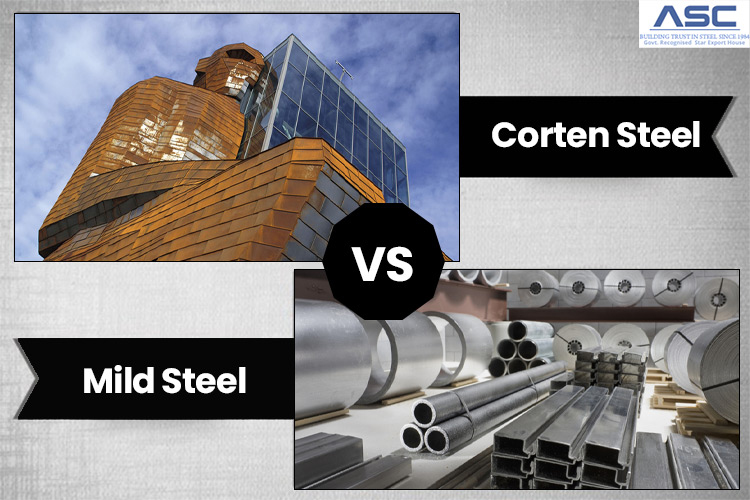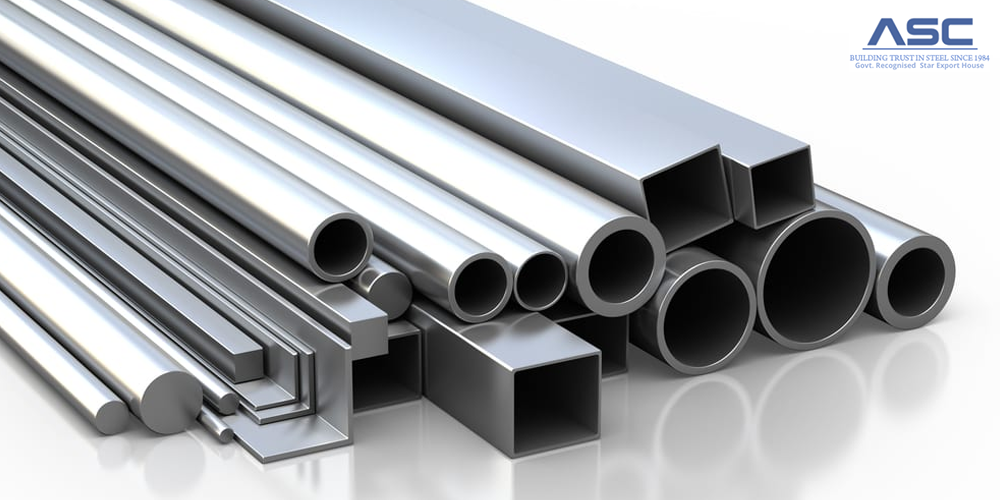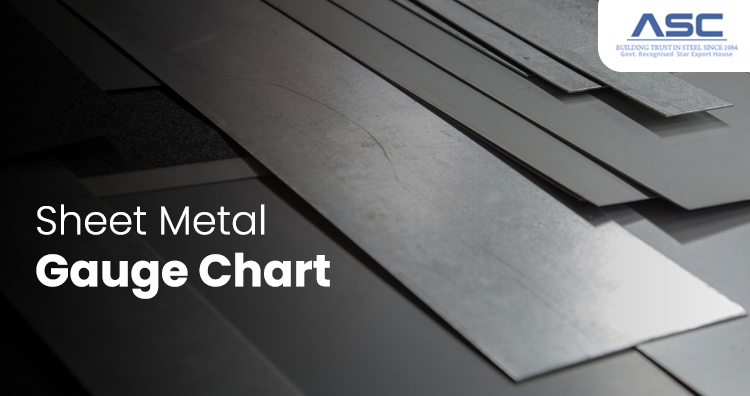Aluminium Vs. Stainless Steel: Which is Better for Your Project?
by AMC
Posted on August 02, 2023 at 12:07 PM

At first glance, aluminium and stainless steel may appear very similar. They both come in various finishes,
offer some degree of corrosion resistance, and can be found in numerous applications.
Whether it's the car in your garage, the kitchen in your home, or the industries and worksites scattered
throughout your city, chances are you'll encounter one or both of these metals hard at work nearby.
However, it's essential to understand the distinctions between them to make the best choice for your specific
needs. In this comparison guide, we will explore the shared characteristics of aluminum and stainless steel,
as well as their differences. This information will aid you in determining the most suitable material for your
project, process, or requirement.
Stainless Steel vs Aluminum - Which is Stronger?
Stainless steel is inherently stronger than aluminum when comparing similar shapes, thicknesses, or designs.
To assess their relative strength, one effective approach is to examine their tensile strength. Tensile
strength measures a material's resistance to breaking under tension. The exact values will vary based on the
specific alloy being used.
Stainless steel alloys typically have tensile strengths starting around 515 megapascals (MPa) and can reach as
high as 1300 megapascals (MPa) in some cases.
In contrast, aluminum's tensile strengths start around 100 megapascals (MPa) and peak around 400 megapascals
(MPa).
Both alloys can undergo treatment processes to achieve further strength enhancements. However, even with
additional treatment, stainless steel will always have the edge in terms of potential strength when high
strength is a crucial factor.
Is Stainless Steel Heavier Than Aluminum?
Yes
One of the significant advantages of aluminum over stainless steel is its lighter weight.
In general, a component made from aluminum will weigh approximately one-third of the weight of an identical
component made from stainless steel.
Of course, the exact weight difference will depend on the specific alloys being compared and can also be
influenced by design considerations.
Nevertheless, it holds true that aluminum is consistently lighter than stainless steel in all cases, making it
a favorable choice in situations where weight is a critical factor.
When to Use Aluminum Vs Stainless Steel
Stainless steel and aluminum stand out as two of the most widely used metals in manufacturing. They have
gained popularity due to their versatility and exceptional resistance to corrosion, making them essential
staples in the metals industry. To determine the optimal choice between aluminum and stainless steel, it is
crucial to compare key factors such as their compositions, mechanical properties, and cost.
Main Characteristics of Stainless Steel vs Aluminum
Stainless Steel
- Contains a minimum of 11% chromium
- Is a ferrous alloy (contains iron)
- Usually magnetic
- High tensile strength
Stainless steel is available in various grades, and these grades are classified by a series number and
assigned a numerical grade. The numerical grades help to categorize the different types of stainless steel
based on their composition, physical properties, and specific applications. Two of the most popular and widely
used stainless steel grades are 304 stainless steel and 316 stainless steel.
Aluminum
- Non-magnetic
- Low density
- Non-ferrous alloy (doesn’t contain iron)
Aluminum, on its own, may have relatively low tensile strength, but it can be significantly enhanced by alloying it with other metals. This process results in various aluminum alloys that exhibit improved mechanical properties and other superior characteristics. Among the most common aluminum alloys are 3003 aluminum and 3004 aluminum.
Aluminium vs Stainless Steel: Which One Do I Use?
When deciding between aluminum and stainless steel for manufacturing, it's essential to consider the distinctive properties each metal offers. Both materials have their strengths and advantages, making them suitable for a wide range of products. Let's explore the key differences in their properties to help guide your decision.
| Aluminum | Stainless Steel |
|---|---|
| -Good Malleability
-High Ductility -Good Conductivity -Light Weight |
-High Tensile Strength
-Heat Resistant -Very Durable -Low Maintenance |
Aluminum vs Stainless Steel: Key Differences
Strength
Stainless steel is indeed heavier and stronger than aluminum. The density of stainless steel is higher than
that of aluminum, resulting in its greater weight per unit volume. On the other hand, aluminum is
significantly lighter, weighing approximately one-third of the weight of stainless steel with the same volume.
Conductivity
Stainless steel and aluminum exhibit significant differences in their electrical and thermal conductivity
properties, leading to distinct applications in various industries.
Cost
Commercial quality aluminum and stainless steel are often comparable in price per kilogram. However, due to
aluminum's lower density, it tends to be more cost-effective overall.
The cost per kilogram of commercial quality aluminum and stainless steel is usually similar because they both
involve similar manufacturing processes and raw material costs. However, aluminum's lower density means that a
kilogram of aluminum occupies a larger volume compared to a kilogram of stainless steel.
Heat Resistance
When comparing stainless steel and aluminum, stainless steel exhibits much better heat resistance with a
melting point of 2500 ℉, while aluminum becomes soft around 400 ℉ and melts at 1220 ℉. However, aluminum has
the advantage over steel in cold temperatures. As the temperature decreases, the tensile strength of aluminum
increases, while steel becomes brittle in low temperatures.
Corrosion Resistance
Aluminum does not rust like iron-based metals; instead, it forms a protective oxide layer on its surface when
exposed to air, preventing rusting. However, aluminum is prone to corrosion in the presence of salt or other
corrosive substances. In contrast, stainless steel, containing chromium, is highly corrosion-resistant and
does not easily rust. Its passive oxide layer acts as a protective barrier, shielding the metal from corrosive
elements. Additionally, stainless steel's non-porous nature enhances its corrosion resistance, making it an
ideal choice for applications in corrosive environments.
Stainless Steel Composition
| Alloy Grades | %C | %Mn | %P | %S | %Si | %Cr | %Ni | %Mo |
|---|---|---|---|---|---|---|---|---|
| SS304 | 0.040 | 1.580 | 0.024 | 0.040 | 0.400 | 18.35 | 8.040 | 0.070 |
| SS304L | 0.010 | 1.638 | 0.023 | 0.002 | 0.412 | 18.56 | 8.138 | 0.364 |
| SS316 | 0.080 | 2.000 | 0.045 | 0.030 | 1.000 | 16.80 | 11.20 | 2.500 |
| SS316L | 0.020 | 1.390 | 0.024 | 0.080 | 0.480 | 16.80 | 10.22 | 2.080 |
Aluminum Alloys Composition
| Alloy | %Cu | %Mg | %Mn | %Si | %Zn |
|---|---|---|---|---|---|
| 2024 | 4.4 | 1.5 | 0.6 | 0 | 0 |
| 6061 | 0 | 1 | 0 | 0.6 | 0 |
| 7005 | 0 | 1.4 | 0 | 0 | 4.5 |
| 7075 | 1.6 | 2.5 | 0 | 0 | 5.6 |
| 356.0 | 0 | 0.3 | 0 | 7 | 0 |
Different Applications of Aluminum vs Stainless Steel
Aluminum Applications:
- Automotive: Aluminum is widely used in the automotive industry due to its lightweight nature and excellent corrosion resistance. It helps reduce the overall weight of vehicles, leading to improved fuel efficiency.
- Train Rails: Aluminum's strength and corrosion resistance make it suitable for use in train tracks, providing a durable and low-maintenance solution.
- Airplanes: Aluminum's combination of lightweight and high strength makes it a favored material in the aerospace industry, where weight reduction is critical for fuel efficiency.
- Spaceships: Aluminum's properties, such as low density and resistance to corrosion, make it suitable for spacecraft and satellite applications.
Electrical Industry:
- Long Distance Power Lines: Aluminum's excellent electrical conductivity and low density make it an ideal choice for long-distance power transmission lines, reducing weight and energy loss during transmission.
- Electrical Wiring: Aluminum conductors are often used for electrical wiring in residential and commercial buildings due to their conductivity and cost-effectiveness.
Architecture:
- Window Frames: Aluminum's malleability and high strength-to-weight ratio make it a popular material for window frames in modern architecture.
- High-Rise Buildings: Aluminum is commonly used in the construction of high-rise buildings, providing structural support while keeping the overall weight of the building in check.
Household Appliances:
- Dishwashers: Aluminum's thermal conductivity makes it suitable for use in dishwasher interiors, aiding in efficient heating and drying of dishes.
- Washers and Dryers: Aluminum components in washers and dryers help manage heat transfer and enhance performance.
- Refrigerators: Aluminum is used in refrigerator construction for its thermal conductivity, which facilitates efficient cooling.
Stainless Steel Applications:
- Kitchen Utensils: Stainless steel is popular for making durable and corrosion-resistant kitchen utensils, cookware, and cutlery.
- Medical Devices: Stainless steel's biocompatibility and resistance to corrosion make it suitable for medical instruments and implants.
- Industrial Equipment: Stainless steel is used in various industrial applications, including valves, pumps, and storage tanks, due to its excellent corrosion resistance.
- Building Facades: Stainless steel provides an attractive and durable solution for building facades, especially in areas with high exposure to environmental elements.
- Food Processing: Stainless steel is preferred in the food industry due to its hygienic properties and ease of cleaning.
You’ll find stainless steel in surgical tools and medical equipment due to its corrosion resistance
- Surgical Tools: Stainless steel's exceptional corrosion resistance makes it a preferred material for surgical tools such as forceps and scissors, ensuring their longevity and maintaining hygiene standards.
- Surgical Implants:Stainless steel is used in various surgical implants like joint replacements and bone plates due to its biocompatibility and resistance to corrosion.
Architecture:
- Bridges: Stainless steel's strength, durability, and resistance to corrosion make it suitable for constructing bridges that can withstand harsh environmental conditions and heavy loads.
- Monuments and Sculptures: Stainless steel's aesthetic appeal, along with its ability to resist corrosion, makes it a popular choice for creating enduring and visually striking monuments and sculptures.
- Buildings: Stainless steel is utilized in various architectural components like cladding, roofing, and structural elements, contributing to the design, strength, and longevity of modern buildings.
Automotive Industry:
- Auto Bodies: Stainless steel is used in some high-end and luxury cars for their body panels and parts. Its strength and corrosion resistance contribute to the car's durability and appearance.
- Rail Cars: Stainless steel is employed in the manufacturing of rail car components, offering durability and resistance to corrosion in the demanding railroad environment.
- Engines: Certain engine components, especially in performance and racing vehicles, may incorporate stainless steel for its high-temperature resistance and mechanical strength.
Aluminum vs Stainless Steel - Which Metal is Best for Your Use Case?
In summary, when choosing between stainless steel and aluminum, there is no one-size-fits-all answer. Both metals have their strengths and weaknesses, making them suitable for various use cases. Consider the following points to guide your decision:
- Corrosion Resistance and Strength:
Stainless Steel: Offers excellent corrosion resistance, easy maintenance, and ample strength, making it ideal for a wide range of applications. Different grades of stainless steel allow for customization to minimize weak points and ensure long-lasting performance.
Aluminum: Provides rust resistance and weight savings, but at the expense of some strength and general corrosion resistance. It is more suitable for applications where weight reduction is crucial. - Heat Resistance and Conductivity:
Stainless Steel: Offers better heat tolerance, making it suitable for high-temperature applications. However, it has lower heat conductivity compared to aluminum.
Aluminum: Exhibits better heat conductivity, but its lower melting point makes it less applicable in high-temperature environments. - Welding and Forming:
Stainless Steel: Welding stainless steel is generally easier compared to welding aluminum due to its thermal traits.
Aluminum: Aluminum is more malleable and better suited for complex shapes and extensive forming. - Electrical Conduction:
Aluminum: Offers an excellent balance of electrical conductivity and cost, making it a lightweight option for electrical conduction. - Cost Considerations:
Costs for both metals can vary significantly. It is essential to compare grades and prices to get an accurate idea of overall costs and potential cost savings.
Ultimately, the best choice between stainless steel and aluminum depends on the specific requirements of your project or application. Carefully assess factors such as corrosion resistance, strength, weight, heat tolerance, electrical conductivity, and cost to make an informed decision and select the most suitable metal for your needs.

Difference Between Corten Steel and Mild Steel
Mild steel, also known as carbon steel, is the most prevalent type of steel today. Mild steel is less expensive and, once sealed, will keep a naturally rusty appearance.

